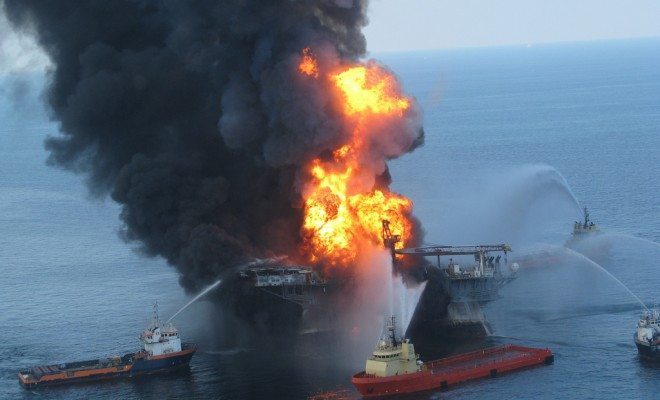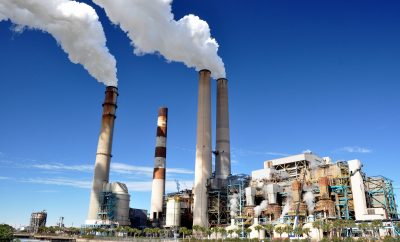 Image courtesy of [Ideum-media+ideas via Flickr]
Image courtesy of [Ideum-media+ideas via Flickr]
Energy and Environment
Long Term Damage from Oil Spills Shows Need for Changes
We all know that BP’s Deepwater Horizon oil spill in April, 2010 was one of the worst spills to date. But the accident continues to have ramifications and inflict damage on the terrestrial and aquatic ecosystems there. In light of these findings, advocates are hoping to address cleanup and drilling policies and procedures and hope to make improvements or change the practices entirely.
A place called Cat Island in Louisiana used to be a major nesting ground for multiple species of birds. The oil spill poisoned the vegetation there, which has continued to die off. In so doing, the root system disappeared, leaving the soil vulnerable to erosion. In fact, over the past five years the island in its entirety has all but disappeared. The birds that nest there have it imprinted in their DNA to do so; it is instinctual to go there and nest. If the island disappears, they will not seek out a new site, they simply will not breed. Although the species may have survived the initial spill, they still face severe threats to their survival. As it stands, the reduced surface area of the island has increased competition and lessened available real estate for nests; essentially, they reproduce in fewer numbers already.

The extent of the Deepwater Horizon spill. Image courtesy of SkyTruth via Flickr
While birds and their black oil slick-covered feathers may be one of the most visible manifestations of a spill, additional long term studies have demonstrated that many types of fish are threatened in more indirect ways as well. Oil damage can cause birth defects and irregularly shaped or mis-beating hearts in baby fish. This means that they can die younger, or can suffer due to a lessened ability to catch prey or escape from becoming prey themselves. Some of these conclusions have come from long term studies following up on the Exxon Valdez spill in 1989. Pacific herring, for example, collapsed in the Prince William Sound in 1993 and have not returned. As always, this is problematic not just for the sake of saving fish and bird lives, but because these species play intricate roles in the health of very complicated ecosystems. The Pacific salmon run is vital to bear populations and the quality of the dense Northwestern forests themselves. In addition, fishing and economic interests are at stake for people who work in those industries.
The process of marine snow involves organic matter such as phytoplankton drifting down from the upper layers of the sea into the depths. This is an aspect of transferring energy and photosynthesized material from the sunlight rich surface to the darker waters, and serves as an important link in the food chain. But when oil is introduced, it fuses to these particles and finds its way to the deep water in what is called a dirty blizzard. This means that an oil spill does not just glide across the surface of the water and endanger creatures near the top, but more deeply affects ocean life. More living things are endangered as they are coated in a layer of oil. In addition, limited human access to these regions means that this aspect of a spill is much more difficult to clean up.

Damage extends far beyond what is visible at the surface. Image courtesy of Green Fire Productions via Flickr
These three studies are among many that catalogue the long term damage inflicted by the Deepwater Horizon spill. Because the results may influence what BP will be required to continue to pay in damages, the company has disputed the validity of them all.
Researchers at the University of Wisconsin recently released a series of papers detailing studies that produced an oil repellant material. In one test, they coated wire with the material and then poured on a mixture of water and motor oil. The water ran off and the oil clumped together, easily removed. The presumed application of this discovery is that it will make clean ups of oil spills easier. Yet there are two ways in which this breakthrough falls short. The first is that while cleaning up a spill may be easier and faster, that does not detract from the damage that it may inflict when it occurs. Secondly, it would be best not to think of it as a get out of jail free card, in the same manner that some seem to think that recent proposals regarding climate engineering mean that we can continue with our ways and inflict as much damage as we please because we can presumably go back and repair it later. Rather, we need to address the problem at its source.

Are we supposed to coat all manners of wildlife with oil repellant material? Image courtesy of Louisiana GOHSEP via Flickr
The Obama administration is about to establish new safety regulations for offshore drilling. Over the course of the previous five years, other responses to the BP spill have included new standards for the casings of wells. This, being the third safety proposal since the incident, would deal with measures to prevent blowouts. These moves are intended to prevent an accident like Deepwater Horizon from occurring again, especially since the administration has been reviewing proposals to begin further offshore drilling in the Gulf of Mexico and in the Chukchi Sea off the coast of Alaska. But an investigative panel determined that the chief cause of the Deepwater spill was not the blowout but a wide ranging occurrence of oversights and improper adherence to regulations. Thus the very process by which offshore drilling is pursued is flawed and in need of revamping. But is this the true source of the problem either? As a spokesman for the Natural Resource Defense Council stated, “Industry and government have taken measures over the past five years to reduce some of the risk in what is an inherently dangerous operation at sea. that’s a far cry from saying it’s safe…”

A 2013 spill burns near New Orleans. Image courtesy DVIDSHUB via Flickr
Thus the very nature of offshore drilling is a problem, and going back further still, our continuing reliance on fossil fuels is a problem. As oil pipelines continue to burst and fracking continues to contaminate water, offshore drilling and the environmental risks therein are yet another manifestation of some of the things in need of complete change, not just tweaking or improvement.








Comments